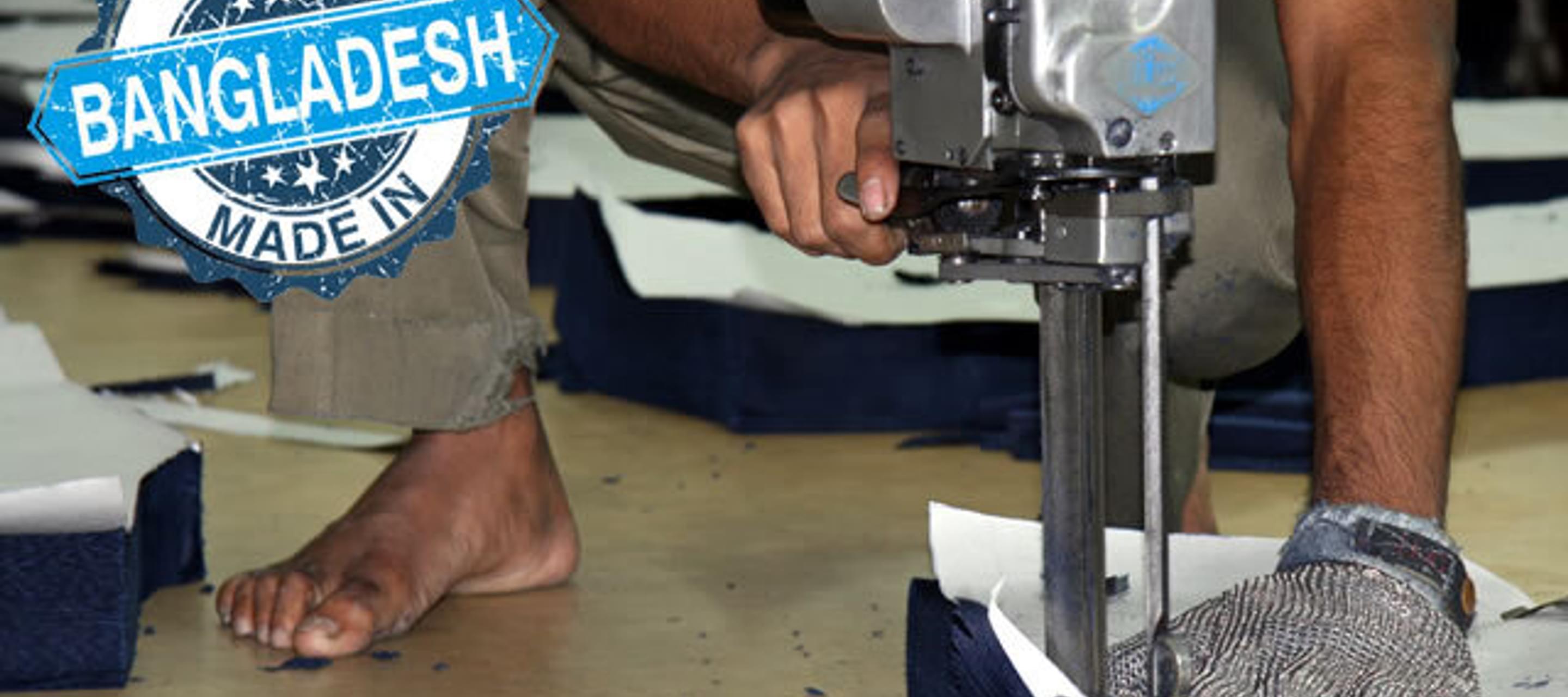Bangladesh: Society of Fabric
3 June 2013

This article was originally published by EthicalCorp.com.
Tragedy in a garment factory has brought new urgency to resolving long-standing failings in a sector crucial to Bangladesh’s economy
The collapse of Rana Plaza in Bangladesh, in which more than 1,100 people died, was entirely foreseeable.
Safety concerns about Bangladesh’s factories have been raised in the past: most recently in December 2012, when a fire at the Tazreen Fashions garment factory, also in Dhaka, killed 112 workers.
Prior to the Rana Plaza collapse, trade union activists had already noted more than 1,000 deaths over the past decade in many accidents in this highly profitable and booming sector. It employs nearly five million Bangladeshis, nearly 85% of them women, and yields some 80% of the nation’s export revenues.
Not only has the industry earned foreign exchange for Bangladesh, but by employing women it has empowered them in a conservative society, which has had an enormously positive effect on gender dynamics in the country.
And yet, for a sector that’s so critical to Bangladesh’s economy, it remains poorly supervised by managers, under-administered by the government, inadequately audited, and rarely inspected properly by government officials. As a result, the garment factories operate with the sort of disregard for safety that was last seen in London in Dickensian times.
Multinational brands know they cannot monitor every factory. Local manufacturers know how to deceive inspectors and auditors. The government is aware of the problems but is beholden to the garment sector, whose tycoons are represented in Bangladesh’s two major political parties – the ruling Awami League and the opposition Bangladesh National Party. And consumers value cheap clothes too much to demand compliance with safety standards and higher wages for workers. But things must change.
Multinational brands know they cannot monitor every factory.
Indeed, just over a century ago a catastrophic fire devastated the Triangle Shirtwaist Factory in New York, killing 146 workers, most of them Italian or Jewish newly arrived migrant women. The commission appointed in New York following that tragedy recommended a raft of legislative proposals, and some 60 new laws were enacted, to improve building codes, apply fire safety measures, and set rules for hours of work and the age at which workers could be hired.
In comparison, domestic and international responses to the Bangladeshi situation have been slow. While volunteers and first-responders worked hard to save lives, there were remarkable stories, such as that of a young woman found alive 17 days after the accident under the debris. The building’s owner almost escaped to India – he was caught in a town near the Indian border.
For its part, the Bangladeshi government says it will simplify rules under which workers can form a union. When workers now seek to register a union, the list won’t be shared with management. At present, the list is shared, ostensibly so that the management can verify if the names are genuine. But Bangladeshi unions say it allows managers to intimidate workers so they don’t join a union.
While such measures are important, it won’t prevent fires, or stop buildings from collapsing, unless the unions feel empowered to represent workers without fear.
Spurred into action
Internationally, major retailers have taken steps to inject financial resources to improve Bangladesh’s infrastructure. Their response is driven by the dramatic nature of the current crisis. The previously slow, drip-feed of abuses that kept occurring would not have led the companies to act in a concerted way.
International trade unions and workers’ rights groups such as Clean Clothes Campaign were prompt in reminding the industry of past warnings that went unheeded. The staggering scale of deaths led multinational brands to act quickly. H&M, Primark, C&A, Tommy Hilfiger, Calvin Klein, Zara and Tesco signed an accord on fire and building safety that will pay for rigorous and independent public inspections of factories, and blacklist those that do not comply. Later, Marks & Spencer, Sainsbury’s, New Look, and N Brown (whose mail order business includes figleaves.com) also joined the accord.
The International Labour Organisation welcomed the accord, saying: “The need for urgent improvement in workplace safety requires the industry to work together to implement a scalable and transparent plan of action that supports the vital role of government and employer and worker organisations in Bangladesh. The ILO is also actively working to realise the goals agreed by the government, garment industry and trade unions of Bangladesh … including the critical need to reform the country’s labour law to bring it in line with international norms.”
This is good as far as it goes, but the shoddy construction at Rana Plaza was not the exception. According to the Bangladeshi newspaper New Age, of the 20,000-25,000 buildings constructed in the past decade or so, only six – you read that right, six – have obtained all proper approvals.
Social and workplace auditors say factory owners have figured out ways to beat the system. And in a society where corruption is rife, observers question if certifications are meaningful.
Even blacklists go only so far. During the December 2012 fire, some western brands were surprised to find that Tazreen was manufacturing their products, even though they had no contract with the factory.
This happens because in the rush before Christmas, some approved Bangladeshi manufacturers are in the habit of taking on more work than they can handle, and then sub-contracting to other manufacturers. Some of those manufacturers may be on blacklists, but the arrangement is between the contractor and sub-contractor and, if all goes well, the big brand doesn’t even know of the arrangement.
This shows a failure – or at least a shortcoming – of due diligence. The UN Guiding Principles on Business and Human Rights, endorsed unanimously by the UN Human Rights Council in 2011, provide a clear roadmap for how businesses should develop systems and procedures to ensure that human rights risks are mitigated and eliminated. That responsibility – to respect rights – is independent of the state’s duty to protect rights. In a world where states can be imperfect, companies have to develop processes to ensure that their conduct does not infringe rights.
The accord is a good step in this direction, but may not be enough. To complicate matters, several British and American fashion retailers have not joined the new initiative at the time of writing, including Walmart, Gap, George at Asda, Next, Matalan, River Island, Sports Direct, Peacocks, Shop Direct, and the Arcadia group, which includes Topshop, Bhs and Dorothy Perkins. There has been some criticism of these eight retailers in the cybersphere as well as by civil society groups. Walmart, which owns Asda, says it prefers to go it alone, and is putting in place its own systems to which it would expect its contractors to adhere.
Likewise, Gap says it will extend loans to Bangladeshi manufacturers to improve their infrastructure and safety standards, which will presumably create an incentive for the manufacturer, since the local company would have a sense of ownership.
Cost is not a major issue. Calculations by Karan Girotra and Serguei Netessine, professors at INSEAD, the business school at Fontainbleu in France, show in the Harvard Business Review that the additional cost per garment of bringing Bangladeshi factories upto international standards may be as little at 3.3%, or ten cents for a T-shirt that costs $3 to produce.
Tangled politics
Even if all international brands agree to work together, and even if the progressive manufacturers in Bangladesh respond to the crisis by investing in their facilities, one key stumbling block must be overcome : the intermingling of the garment industry and Bangladesh’s politics.
According to local trade union groups, nearly a third of Bangladesh’s parliamentarians either own garment businesses, or have strong links with them. Doing anything that increases costs – raising wages, requiring better standards for health and safety by getting companies to invest in modern equipment, or imposing stiffer fines for persistent violations – is against their financial interests.
Bangladesh has carved an entire business sector out of nothing: it doesn’t produce raw materials or the modern machinery that are critical for the industry. But it has abundant labour, willing to work at wages that are barely above what the World Bank considers the absolute minimum. At $38 a month, this average factory worker’s income is just above the so-called “dollar a day” standard (and substantially below Bangladesh’s per capita income of $848).
Such a wage makes Chinese wages – about five to six times as much – seem extravagant. And yet, to let the industry prosper, Bangladesh has reduced tariffs to import raw materials and machinery for garments, while maintaining high tariffs for capital goods needed for other manufacturing processes. This creates a perverse incentive, driving investment away from other areas where Bangladeshi entrepreneurs may want to invest, as the Wall Street Journal pointed out after the Tazreen fire.
To be sure, the solution does not lie in boycotting Bangladeshi products or divesting from Bangladesh. Instead of a cut-and-run approach, experts prefer a stay-and-improve approach. David Schilling, senior programme director at the New York-based Interfaith Center for Corporate Responsibility, says: “There have to be clear signals to governments and suppliers that positive steps are being taken.” Schilling says that in 2012, of some 5,000 factories operating in Bangladesh, only 232 were inspected, and of those, 25% failed to meet standards.
But if multinationals left Bangladesh, it would drive Bangladeshi workers to take up jobs in yet more hazardous industries. Or, it would force them into abject poverty, particularly weakening women, who form the backbone of the sector.
If ethical consumers can force companies to offer fairtrade coffee and conflict-free diamonds, there may be scope for selling garments produced in safe surroundings and made by workers whose rights are protected and who are paid a living wage competitively but fairly. That requires a sharp rethink in the way the industry has developed in Bangladesh. Neither international brands, nor domestic manufacturers can shirk the responsibility. They must work together.
The driving force for international brands should not only be protecting their reputation, or merely to weather the storm of adverse publicity. It should be proactive due diligence, which includes working with Bangladesh to enable needed structural changes. This does not mean the immediate, limited international effort to shape up Bangladesh’s garment sector is misdirected. It is necessary. But it cannot be sufficient. Bangladesh itself must rise to the occasion, and put its most precious resource – people – first.




